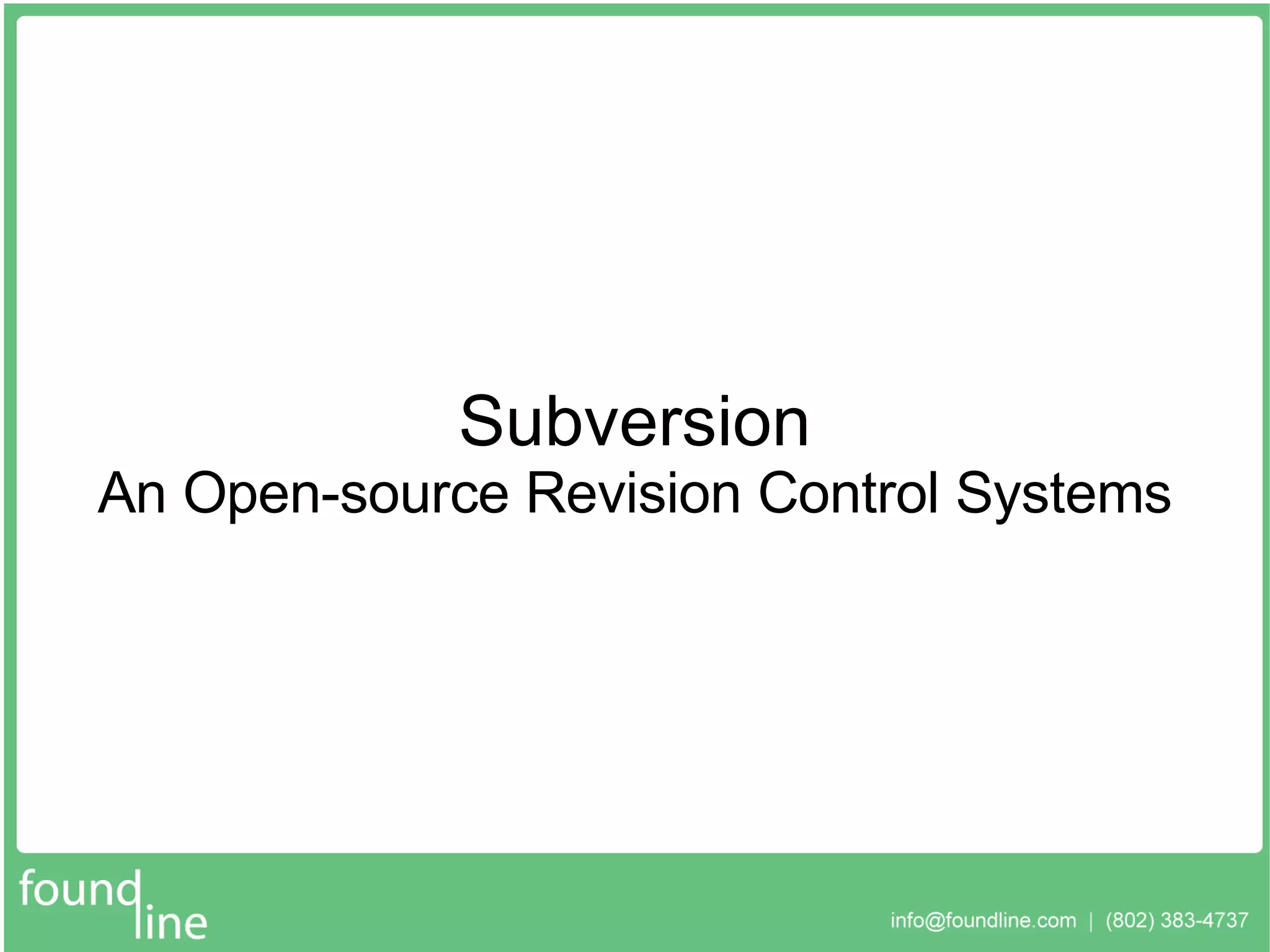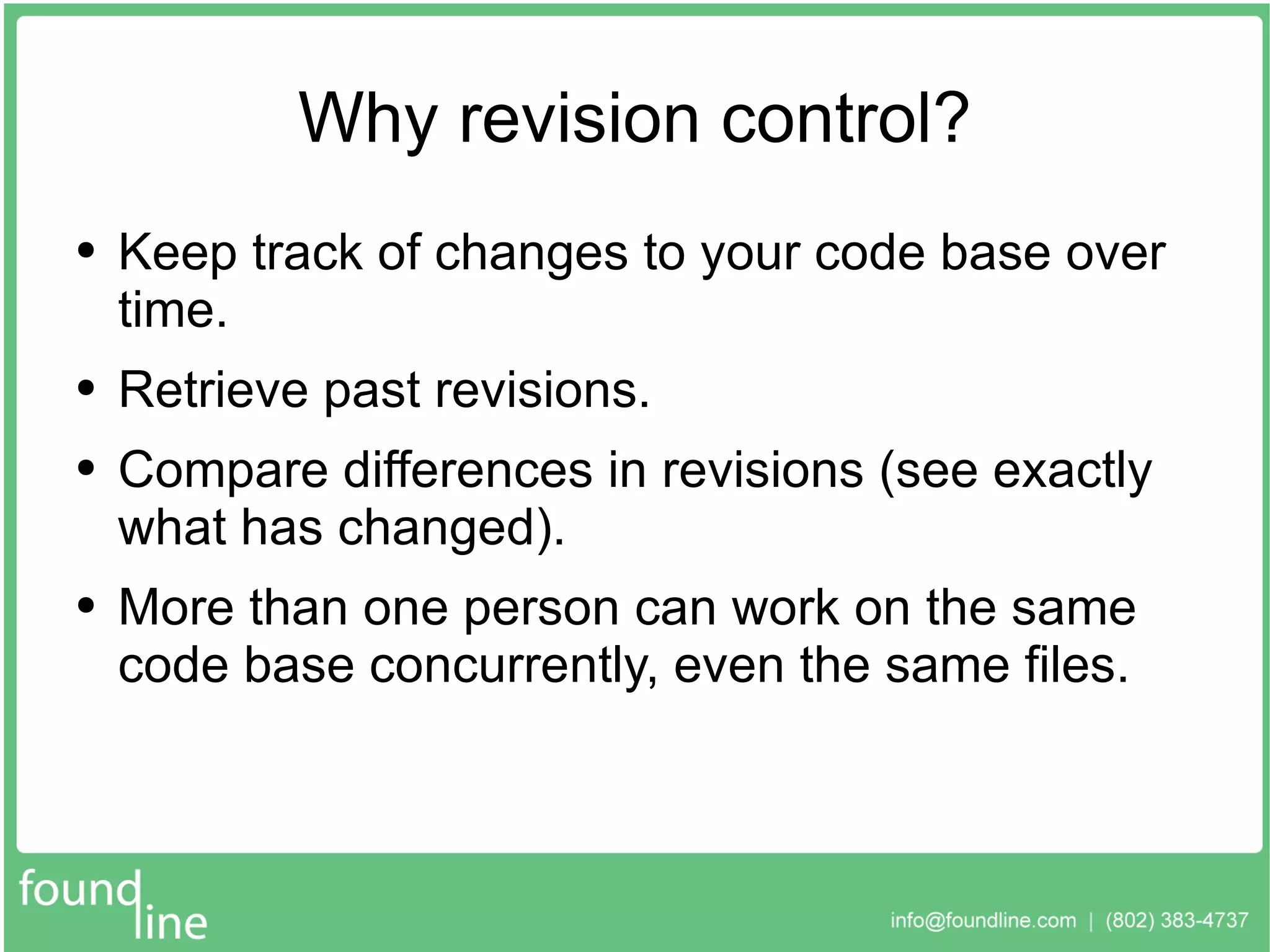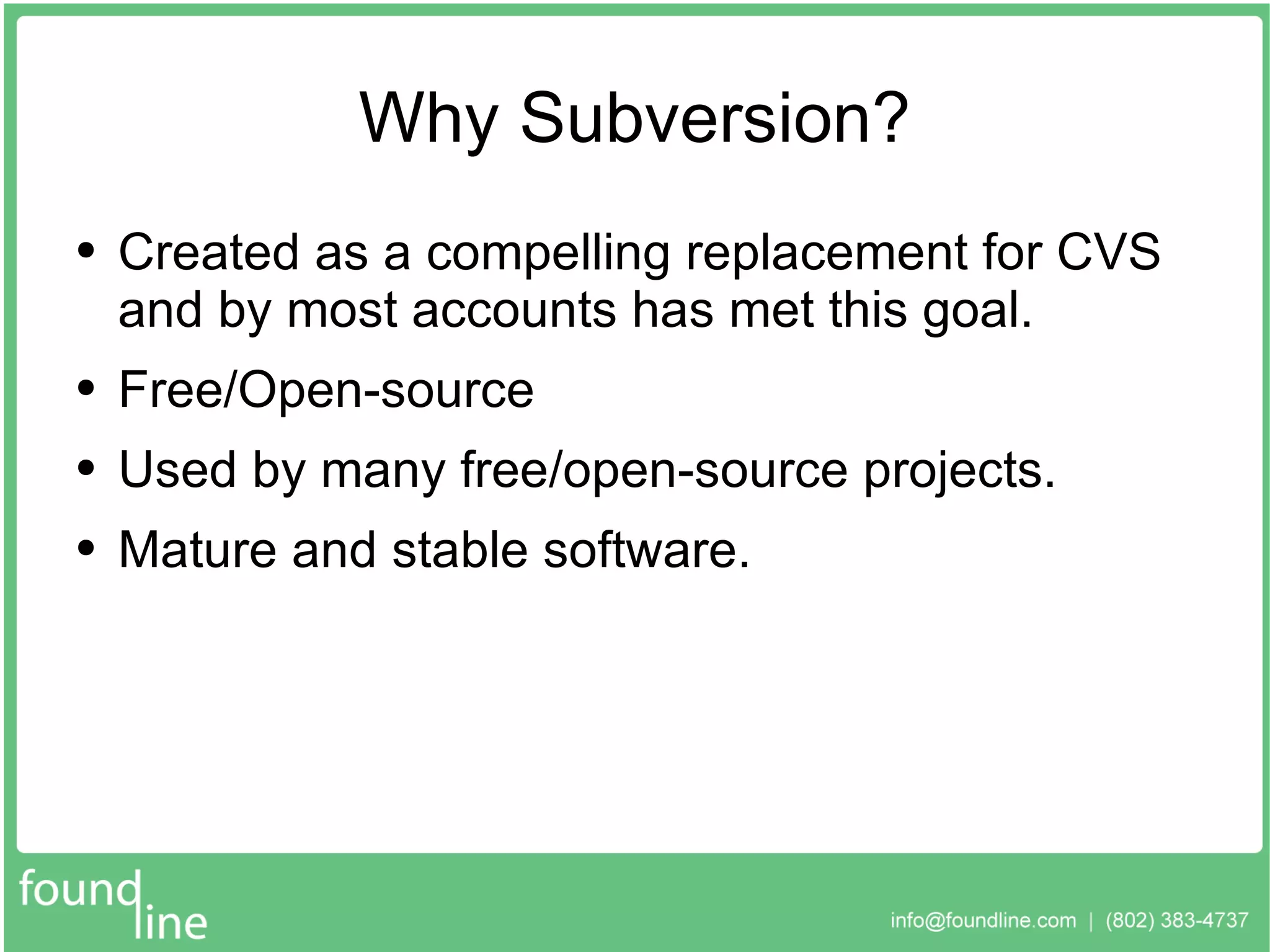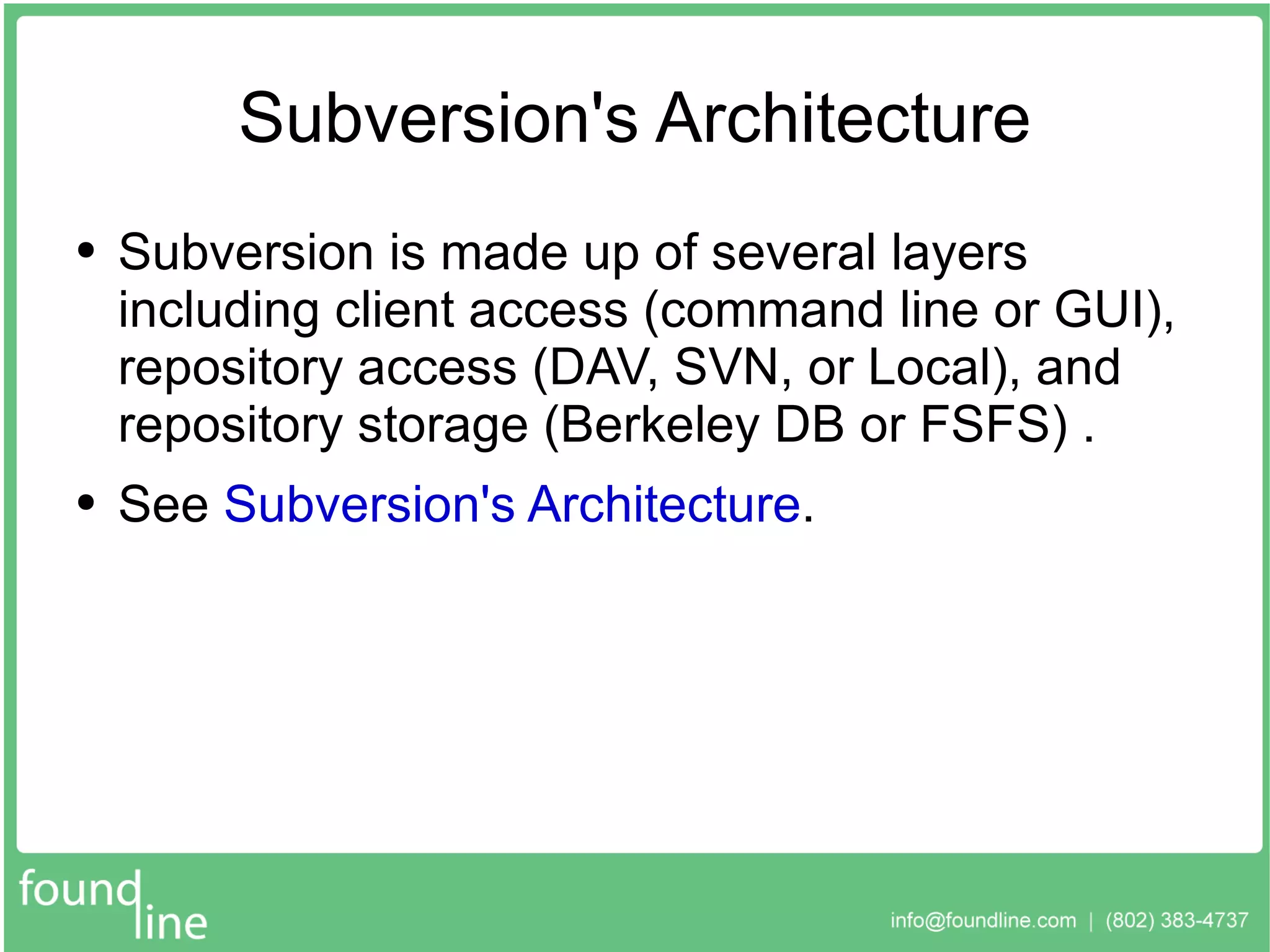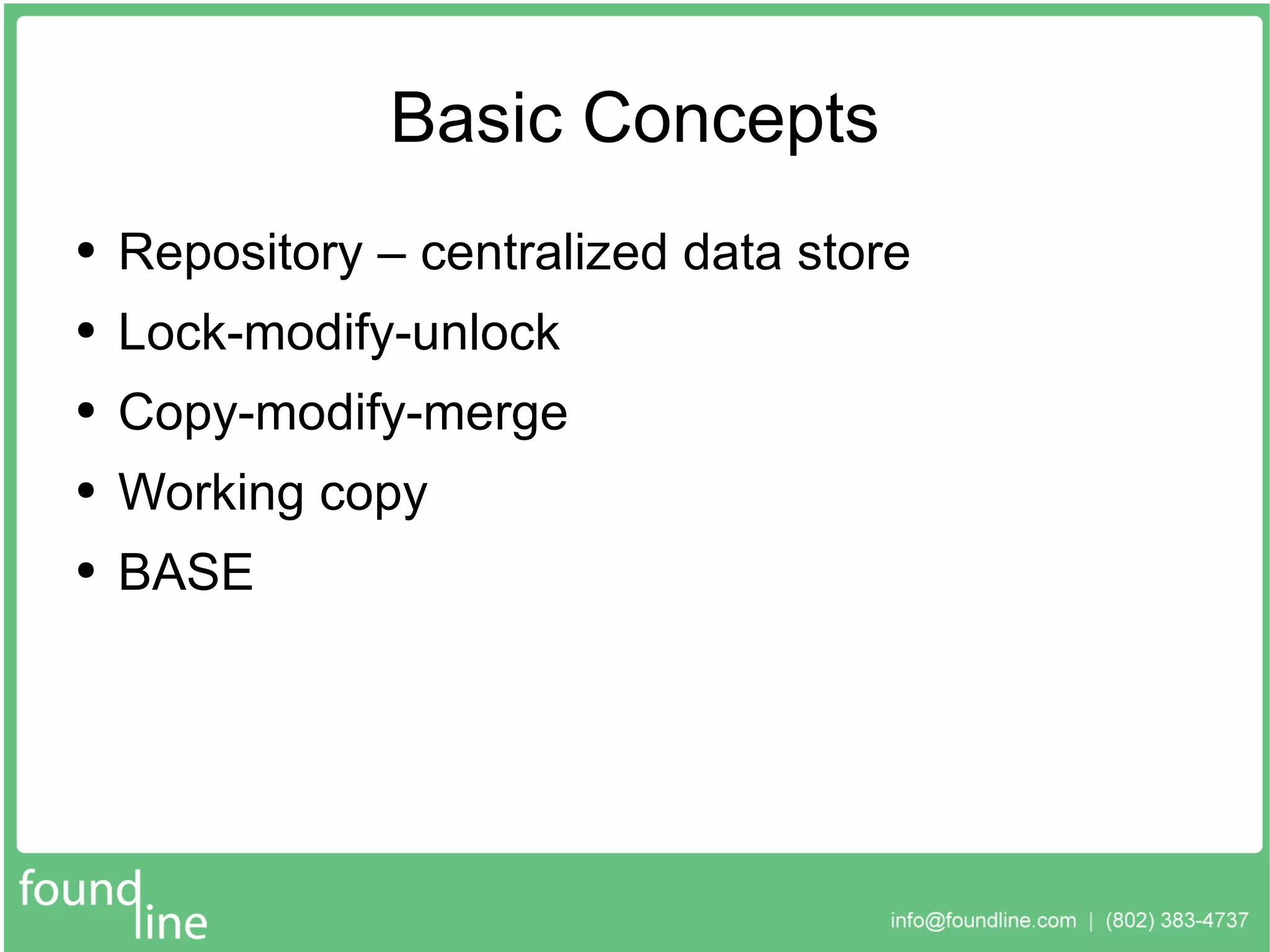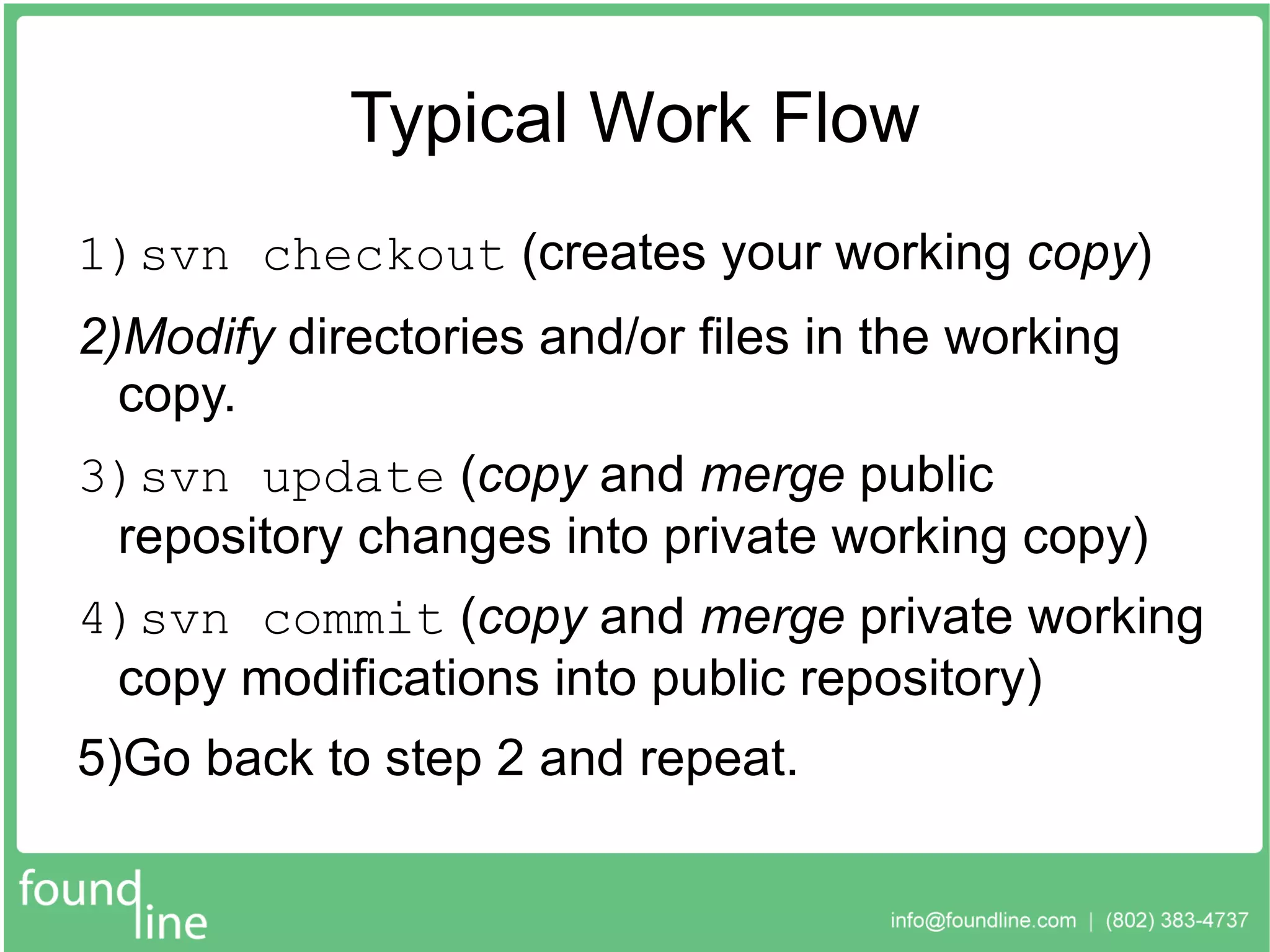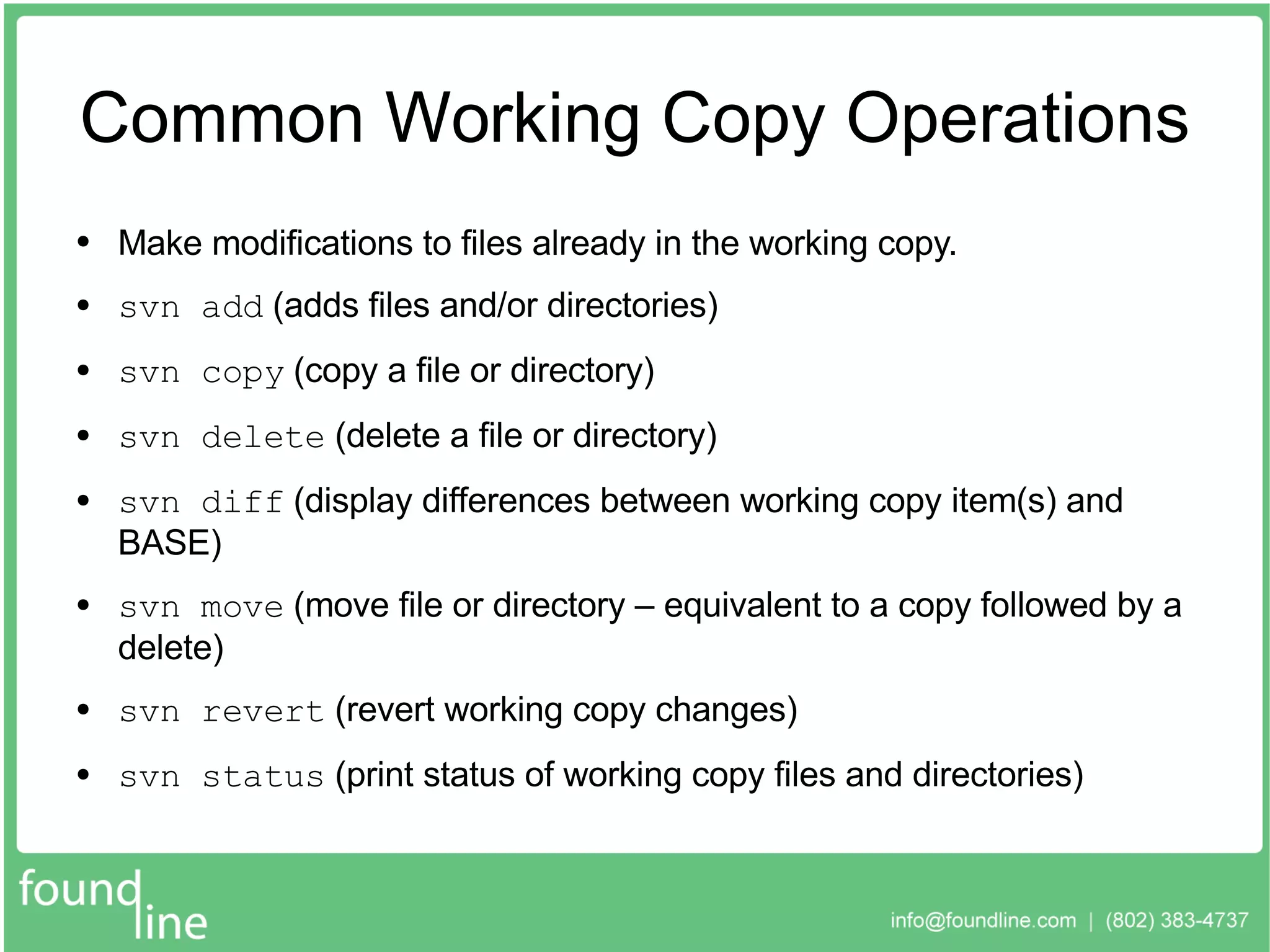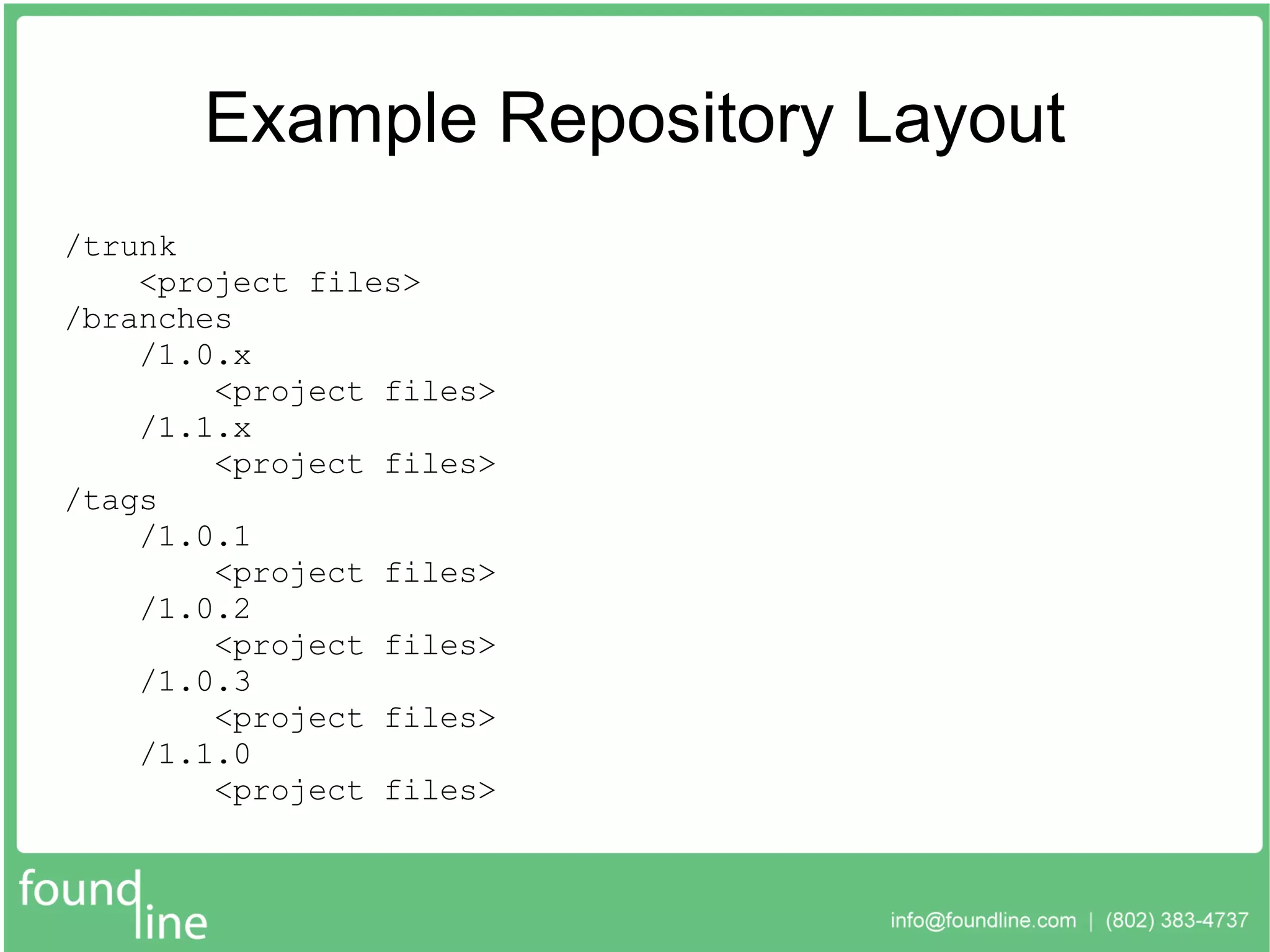Subversion is an open-source revision control system that enables tracking changes in code over time, facilitating concurrent collaboration among multiple users. It serves as a mature alternative to CVS and is widely utilized in various projects. The document outlines key components such as repository structure, basic operations, and advanced topics related to using Subversion effectively.
